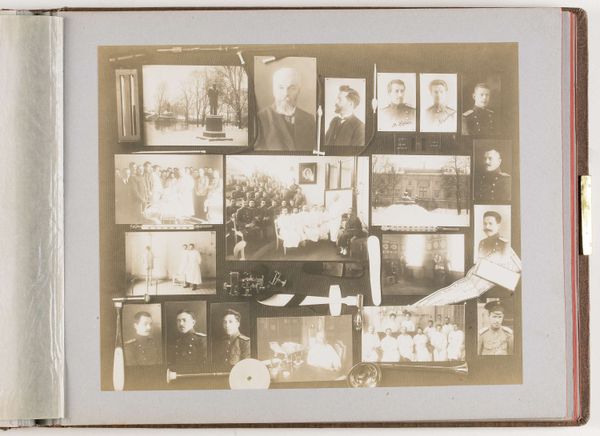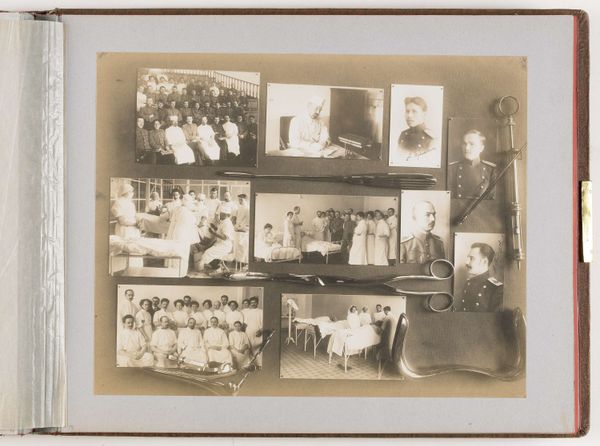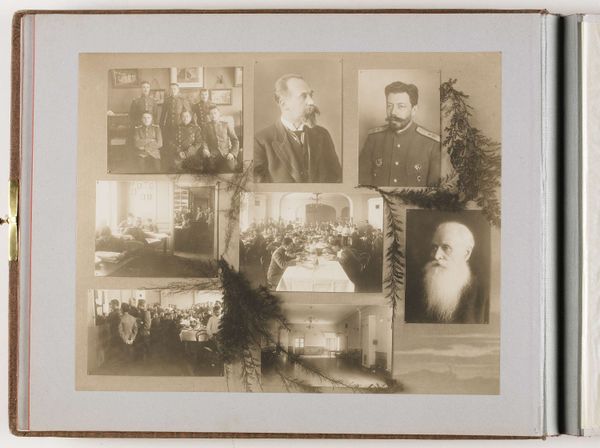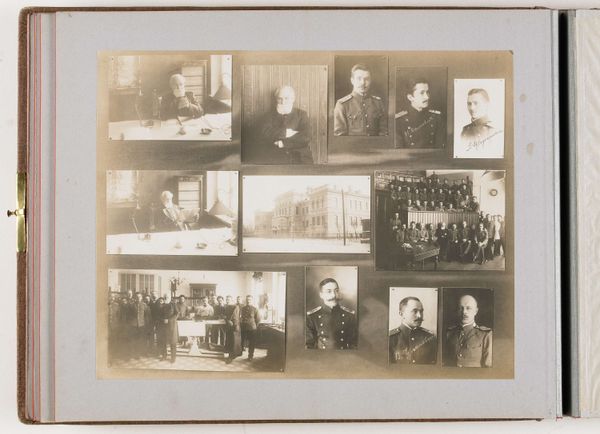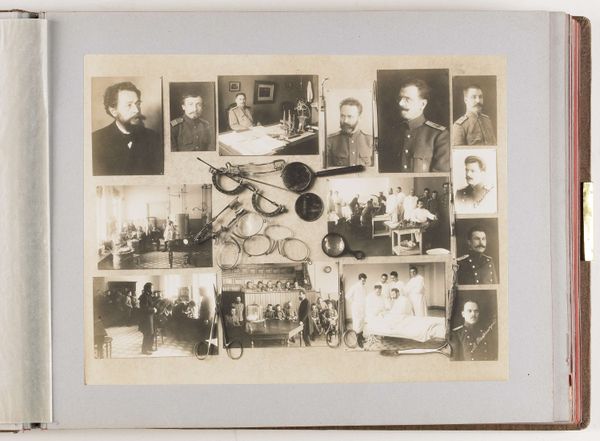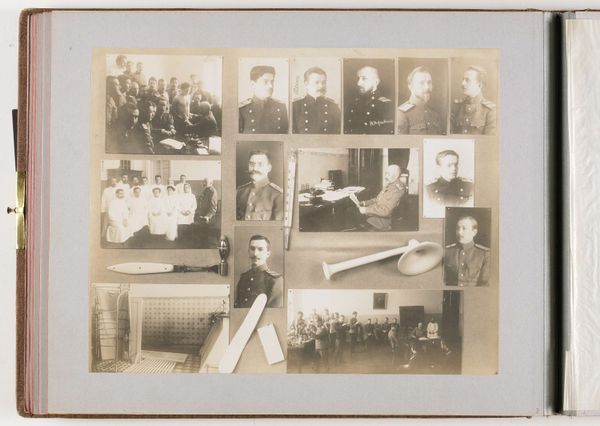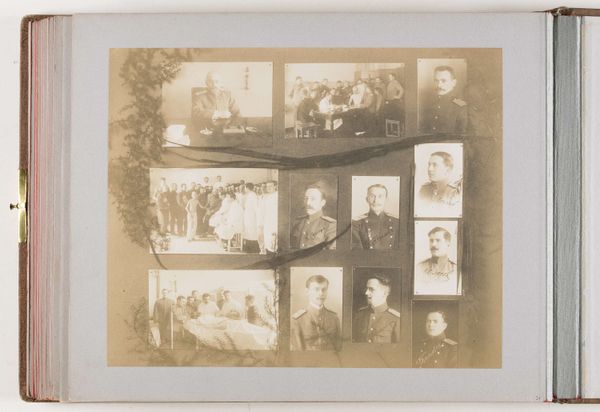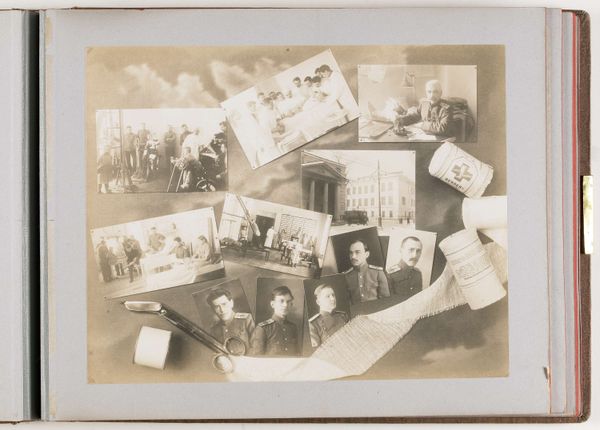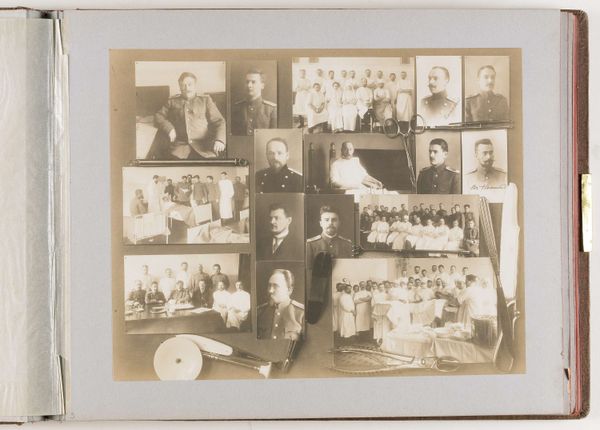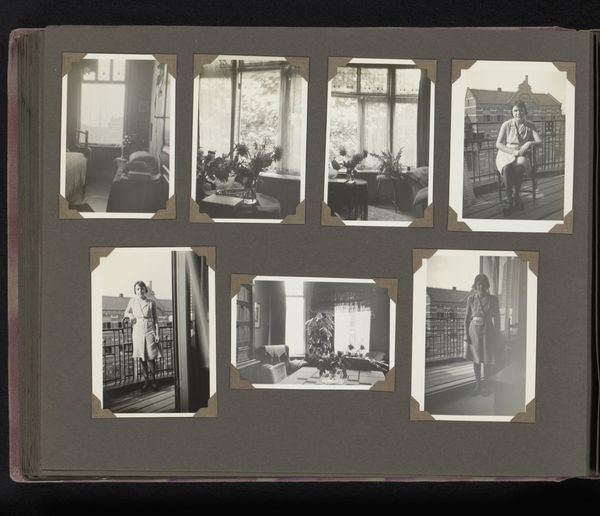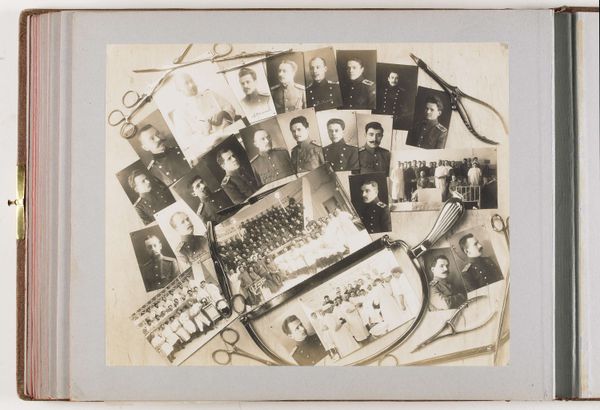
Compositie van vijftien foto's van personen aan de Keizerlijke Militair-Medische Academie, gecombineerd met decoratie van medische instrumenten 1913
0:00
0:00
collage, photography
#
portrait
#
collage
#
photography
#
history-painting
#
academic-art
Dimensions: height 231 mm, width 290 mm
Copyright: Rijks Museum: Open Domain
Curator: This photographic collage, dating back to 1913, is called "Compositie van vijftien foto's van personen aan de Keizerlijke Militair-Medische Academie, gecombineerd met decoratie van medische instrumenten." It’s by V. Sabel'skij. Editor: The sepia tones immediately evoke a sense of history, like stepping back into a faded photograph from a bygone era. And the stark surgical tools juxtaposed with the portraits...it’s rather unsettling. Curator: Yes, there's a curious tension. Sabel'skij combines photographic portraiture with documentation of medical facilities and procedures, creating a visual representation of the Imperial Military Medical Academy. The arrangement, deliberately combining medical instruments, speaks to the symbolic authority of medicine. Editor: Authority, absolutely. Who are these people, though? Are they instructors, surgeons, students? Their serious expressions convey such formality, especially when presented next to images that probably show how people worked back then. Are they proud, burdened, or simply documenting? I’m keen to think about this from an institutional and class perspective. Curator: It raises fascinating questions about institutional representation at the turn of the century. The portraits are styled in such a way to suggest expertise and dignity, connecting individuals to the respected institution and field. Notice how surgical instruments act almost like heraldic symbols. They signify knowledge, skill, even power over life and death. Editor: And consider what medical photography meant at the time, beyond institutional self-regard. These pictures served various purposes. Medical advances were changing society in radical ways. Was photography seen as an objective, 'scientific' tool, or did it have propagandistic functions? I imagine these sorts of collages also fostered professional solidarity or documented professional pride. Curator: Intriguing thought. Looking at the imagery with contemporary eyes, we can explore further. The placement of these medical tools isn’t haphazard. By placing surgical instruments over people or settings, Sabel’skij subtly weaves together humanity and medicine, making visible an ideological landscape about healing, the human body, and institutions. Editor: It’s almost an unsettling fusion. This collage speaks volumes, especially when viewed today. It challenges us to reconsider what ‘progress’ in medicine really means, given its social context and embedded ideologies. Curator: Indeed. I hadn’t quite seen it that way before. The composition makes you think about how medicine, individuals, and institutions construct a vision of public good, then and now. Editor: Yes, and perhaps reveals the human complexities underneath these layers of photographs and tools.
Comments
No comments
Be the first to comment and join the conversation on the ultimate creative platform.
